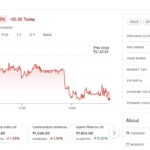If you’re new to trading and having trouble figuring out when to buy and sell stocks, you might want to try using the Stochastic Oscillator. It’s a tool that helps you see if stocks are overbought or oversold. It was made by George Lane in the late 1950s and is now used by traders of all levels.
The Stochastic Oscillator looks at how much a stock’s price changes over time. It has two lines, the %K line and the %D line, that go from 0 to 100. If the %K line goes above the %D line, it’s a good time to buy. If the %K line goes below the %D line, it’s a good time to sell.
The Stochastic Oscillator is a popular momentum indicator that is used to determine overbought and oversold conditions. It was developed by George Lane in the late 1950s, and has since become a widely-used tool for traders of all levels.
In this beginner’s guide, we will explain what the Stochastic Oscillator is, how it works, and how you can use it to make better trading decisions.
What is the Stochastic Oscillator?
The Stochastic Oscillator works by looking at a stock’s price over a certain amount of time, usually 14 days. It uses a formula to calculate %K and %D values, which are plotted on a chart.
If the %K line goes above the %D line, it means the stock is likely to go up. If the %K line goes below the %D line, it means the stock is likely to go down.

How does the Stochastic Oscillator work?
The Stochastic Oscillator measures the level of the close relative to the high-low range over a set period of time. Typically, the period is set to 14 days, but it can be adjusted to fit the trader’s needs.
The Stochastic Oscillator is calculated using the following formula:
%K = (Current Close – Lowest Low) / (Highest High – Lowest Low) * 100
%D = 3-day simple moving average of %K
The resulting values for %K and %D are then plotted on a chart ranging from 0 to 100. As previously mentioned, a %K line crossing above the %D line is a buy signal, while a cross below the %D line is a sell signal.
How can you use the Stochastic Oscillator?
The Stochastic Oscillator can be used in different ways. Some traders use it to see if stocks are overbought or oversold. Others use it to decide when to enter or exit a trade. A popular strategy is to look for differences between the Stochastic Oscillator and the stock’s price.
One popular strategy is to look for divergences between the Stochastic Oscillator and the price of the security being traded.





![Mastering Advance Option Chain Tool [AOC]: A Trader’s Key to Success](https://seorub.com/wp-content/uploads/2023/07/A-trader-life-with-advance-option-chain-tool-AOC1-150x150.jpg)
